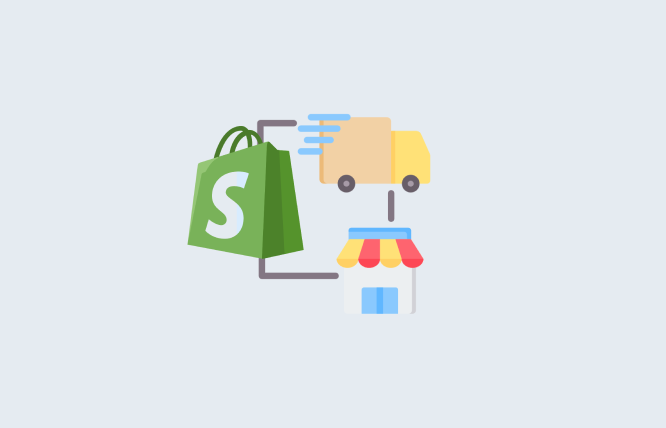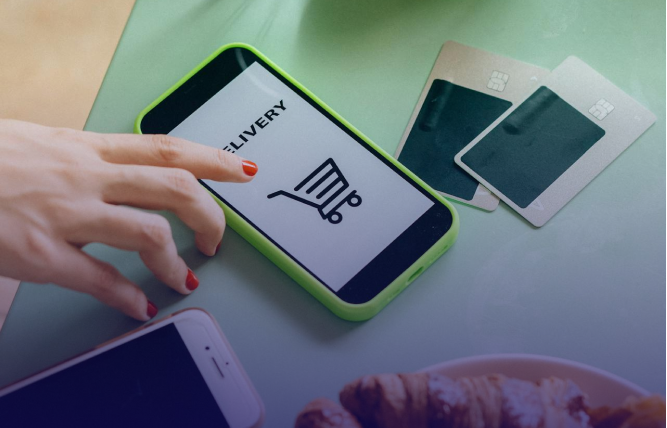Introduction
Dropshipping is gaining popularity with business owners and customers all over the world. For businesses, the next question is how to fulfill dropshipping orders on Shopify. In this article we will learn:
Dropshipping has gained massive popularity over the years and new entrepreneurs are looking towards dropshipping as a great way to generate revenue. According to studies, the dropshipping market is set to reach $301.1 billion in 2024.
One of the major concerns for businesses that are looking to expand their dropshipping is the dropshipping fulfillment aspect. There are several factors that can pose a challenge for these businesses.
In this article we will explain how to fulfill dropshipping orders on Shopify and simplify business processes.
What is Dropshipping Fulfillment?
Dropshipping fulfillment refers to the process of fulfilling customer orders in a dropshipping business model. Unlike traditional retail where the retailer holds inventory and fulfills orders directly, in dropshipping, the fulfillment is outsourced to a third-party supplier or manufacturer.
In dropshipping fulfillment, the dropshipping store acts as a middleman, handling customer inquiries, marketing, and sales, while the supplier takes care of inventory management, order fulfillment, and shipping logistics.
Dropshipping fulfillment offers several advantages, including minimal upfront investment, reduced inventory management responsibilities, and the ability to offer a wide range of products without the need for warehousing.
However, it also comes with challenges such as reliance on suppliers for product quality and shipping times, as well as lower profit margins compared to traditional retail models.
Dropshipping Order Fulfillment Benefits
Dropshipping order fulfillment offers several benefits for businesses operating in this model. Here are some of the key advantages:
Low Overheads
Dropshipping eliminates the need for inventory storage, reducing overhead costs associated with warehousing, inventory management, and fulfillment operations. This allows businesses to operate with lower initial investment and ongoing expenses.
Minimal Risk
Since dropshipping businesses don’t need to purchase inventory upfront, there’s minimal risk of overstocking or holding obsolete products. This risk mitigation makes it easier for entrepreneurs to test new products and niche markets without significant financial exposure.
Scalability
Dropshipping enables businesses to scale rapidly without the constraints of physical inventory. As sales volume increases, businesses can easily expand their product offerings by adding new suppliers and product lines, catering to a broader audience and increasing revenue potential.
Flexibility
Dropshipping offers flexibility in terms of product selection and market testing. Businesses can quickly add or remove products from their online store without the burden of managing inventory levels. This flexibility allows for rapid adaptation to changing market trends and customer preferences.
Global Reach
With dropshipping, businesses can access a global network of suppliers and customers, expanding their reach beyond geographical boundaries. This opens up opportunities for international sales and market penetration without the need for establishing physical presence in foreign markets.
Focus on Marketing and Sales
By outsourcing order fulfillment to suppliers, dropshipping businesses can focus their resources and efforts on marketing, sales, and customer acquisition. This allows for more strategic allocation of resources to activities that drive growth and profitability.
Common Dropshipping challenges
Dropshipping, like any business model, comes with its set of challenges. Here are some common challenges faced by dropshipping businesses:
Supplier Reliability
Relying on third-party suppliers means entrusting them with inventory management and order fulfillment. It’s essential to partner with reliable suppliers who can consistently deliver quality products on time. Issues such as stockouts, delayed shipments, or product quality issues can negatively impact customer satisfaction and brand reputation.
Product Quality Control
Since dropshippers don’t physically handle the products they sell, ensuring product quality can be challenging. Businesses must thoroughly vet suppliers and conduct quality checks to maintain high standards. Failure to deliver quality products can lead to returns, refunds, and damage to the brand’s reputation.
Shipping Times and Costs
Shipping times and costs can vary significantly depending on the supplier’s location, shipping method, and destination. Long shipping times or high shipping costs can deter customers and affect conversion rates. Businesses need to find a balance between affordable shipping options and reasonable delivery times to meet customer expectations.
Inventory Management
While dropshipping eliminates the need for inventory storage, businesses still need to manage product listings, stock availability, and supplier relationships effectively. Maintaining accurate product information, monitoring stock levels, and updating listings in real-time are crucial for avoiding stockouts and backorders.
Customer Service and Communication
Dropshipping businesses must provide excellent customer service and communication to address inquiries, resolve issues, and maintain customer satisfaction. Since businesses are reliant on suppliers for order fulfillment and shipping, effective communication with suppliers is essential to ensure timely and accurate order processing.
Competitive Pricing
With the increasing popularity of dropshipping, competition in the market is fierce. Finding profitable products with competitive pricing while maintaining adequate profit margins can be challenging. Businesses must conduct thorough market research and price analysis to identify profitable niches and pricing strategies.
Brand Differentiation
Building a unique brand identity and standing out in a crowded market is essential for dropshipping success. Businesses need to focus on branding, marketing, and customer experience to differentiate themselves from competitors and attract and retain customers.
Legal and Regulatory Compliance
Dropshipping businesses must comply with various legal and regulatory requirements, including consumer protection laws, tax regulations, and import/export regulations. Failing to adhere to these regulations can result in legal issues, fines, or penalties, affecting business operations and reputation. It’s essential to stay informed about relevant laws and regulations and ensure compliance.
How to Fulfill Dropshipping Orders on Shopify: Steps Taken
Dropshipped orders are processed through a streamlined workflow that involves several key steps:
Customer Places an Order
The process begins when a customer places an order on the dropshipping retailer’s website or platform.
Order Confirmation
Upon receiving the order, the retailer sends an order confirmation email to the customer, acknowledging the purchase and providing relevant details such as order number, item(s) purchased, and estimated delivery date.
Forwarding the Order to the Supplier
Instead of fulfilling the order from their own inventory, the retailer forwards the order details to the chosen supplier or dropshipper. This typically includes the customer’s shipping address, selected product(s), quantity, and any other relevant information.
Supplier Processes the Order
The supplier receives the order information from the retailer and proceeds to process it. This involves picking the ordered item(s) from their inventory, packaging them securely, and preparing them for shipment.
Shipping and Delivery
Once the order is processed, the supplier arranges for shipping through the chosen carrier or logistics provider. They generate a shipping label and dispatch the package for delivery to the customer’s address.
Order Tracking
The retailer provides the customer with order tracking information, typically through an email notification or by enabling order tracking on their website. Customers can then monitor the progress of their shipment and receive updates on its status until it reaches its destination.
Delivery to Customer
The carrier delivers the package to the customer’s shipping address as specified in the order. Upon receipt, the customer can inspect the package, verify its contents, and provide feedback on the overall shopping experience.
Customer Support and After-Sales Service
Throughout the process, the dropshipping retailer remains in contact with the customer, addressing any inquiries, concerns, or issues that may arise. They provide ongoing customer support and ensure a positive post-purchase experience, which can help foster customer loyalty and satisfaction.
Conclusion
Dropshipping has played a vital role in improving the e-commerce market and new entrepreneurs are using this to improve their revenue stream. While dropshipping fulfillment has several issues and challenges, there are ways to resolve these issues and make the most out of your business.
One great way to improve the fulfillment of dropshipping orders on Shopify is to create an online dropshipping store that can help you drive more customers and get a better yield on your products. Partner with FuturByte to get an expertly built store. Book a consultation today.
Also Read: Hire Someone to build Shopify Store
Frequently Asked Questions
Have questions or feedback?
Get in touch with us and we‘l get back to you and help as soon as we can!




